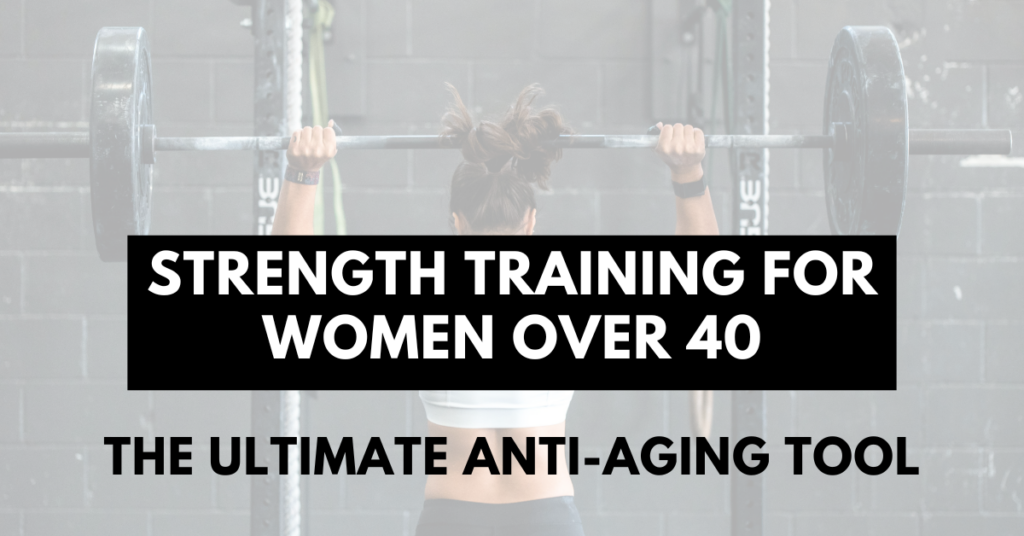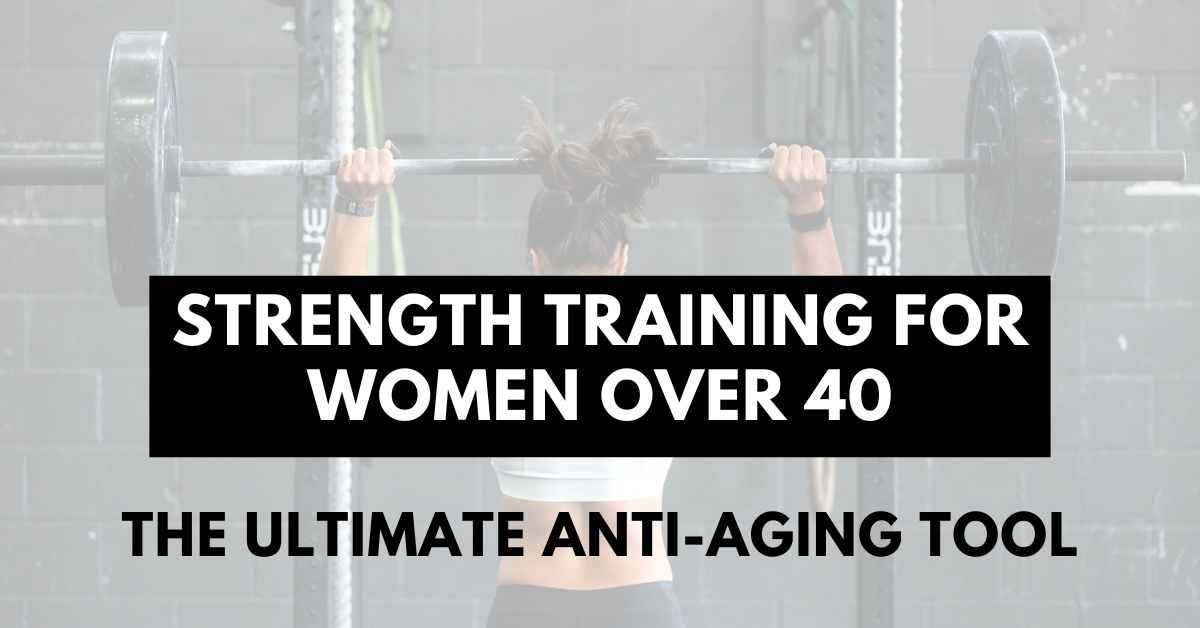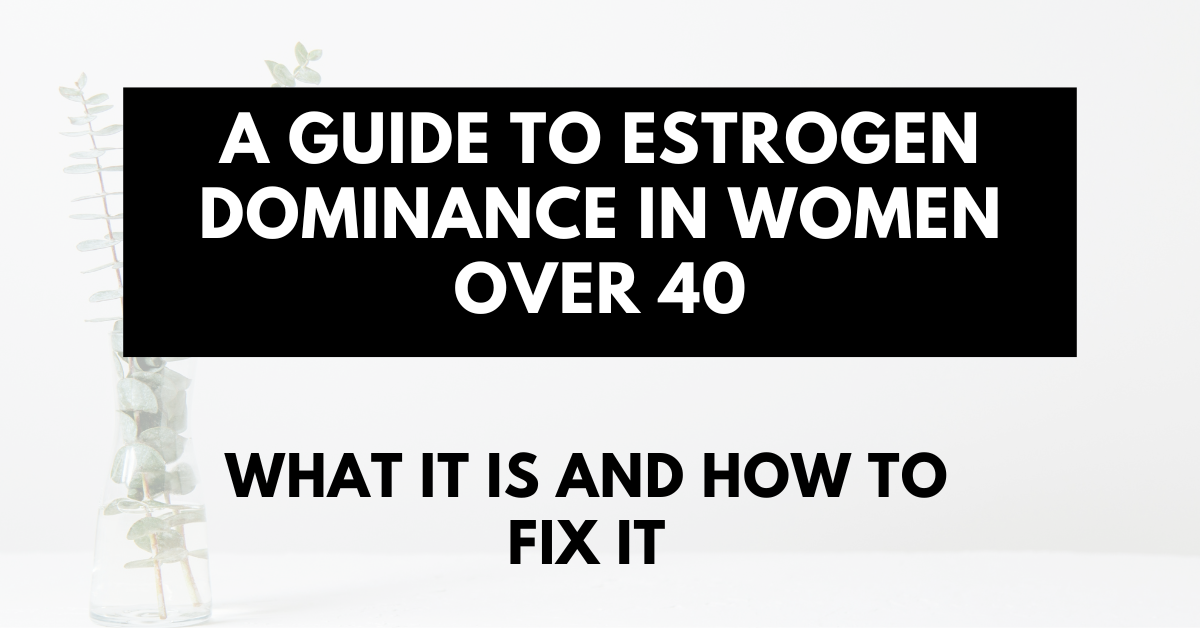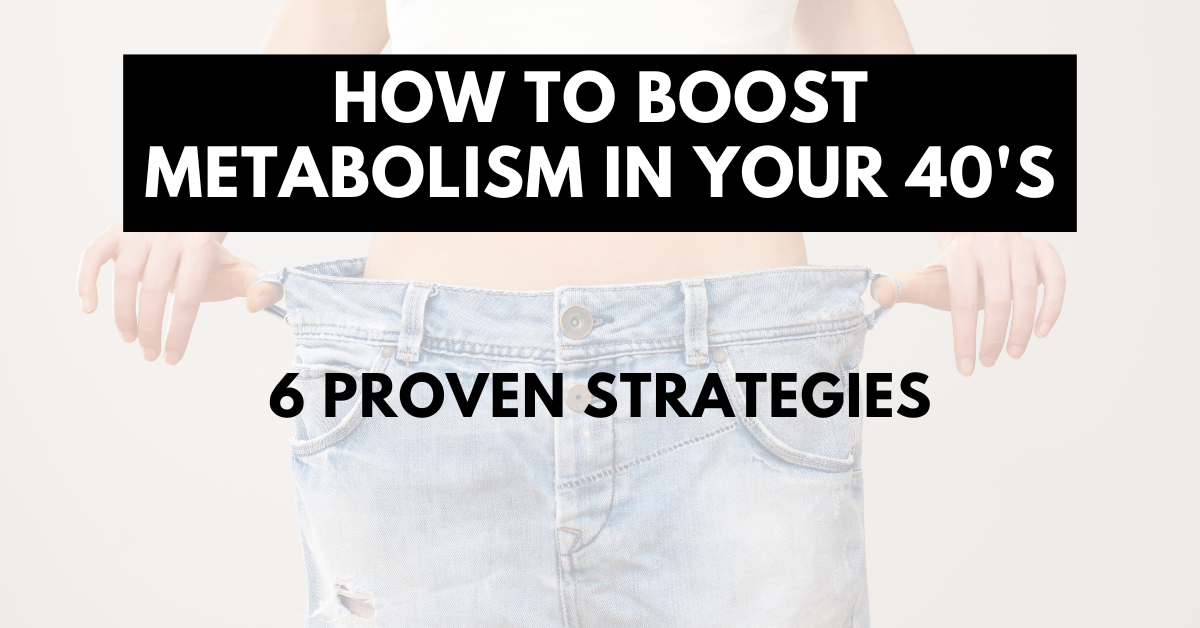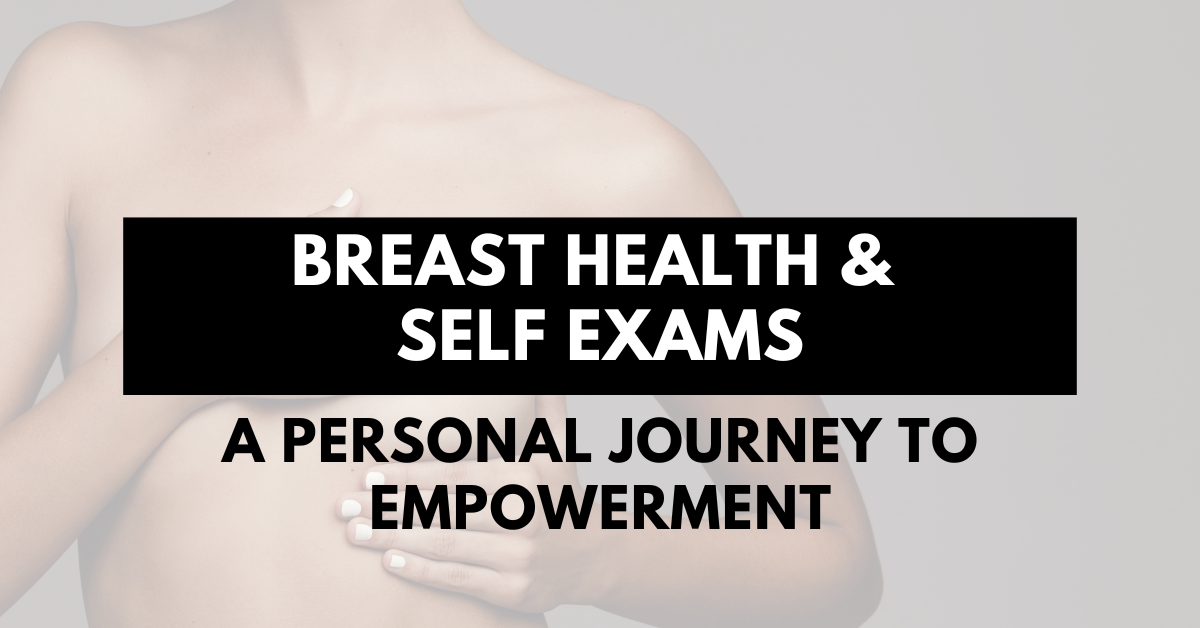In this post, I share how strength training for women over 40 is the ultimate anti-aging tool. If you had told me in my 20s that lifting heavy weights in my 40s would be the secret to energy, confidence, and even hormonal balance—I probably would’ve laughed and sprinted away on a long run instead. Back then, cardio ruled my world. But here I am, over 40, feeling stronger, leaner, and more empowered than ever… and it’s all thanks to strength training.
Ladies, if you’re looking for that spark again—whether it’s feeling good in your clothes, boosting your metabolism, or simply keeping up with your kids (or fur babies)—strength training might just be your magic ticket.
Let’s dig into why lifting weights is not just beneficial but essential for us fabulous 40+ women, how to do it safely, and how to get started even if you feel like a total newbie.
The Big Picture: Why Strength Training for Women Over 40 is a Non-Negotiable
1. Hormonal shifts and muscle loss are real - but reversible.
Once we hit 35, we naturally begin to lose muscle mass in a process called sarcopenia, which can accelerate during menopause due to declining estrogen levels. Research shows that women can lose up to 3–8% of muscle mass per decade after 30, and the rate speeds up after 60 (Mitchell et al., 2012).
But here’s the good news: strength training can literally reverse this trend.
Lifting weights signals your body to build muscle—even in your 40s, 50s, 60s, and beyond. This not only improves strength and mobility but also enhances insulin sensitivity, boosts bone density, and protects against injury (Westcott, 2012).
2. Say hello to a revved-up metabolism
Muscle is metabolically active tissue, meaning it burns calories even at rest. The more muscle you have, the higher your resting metabolic rate. Translation? You can eat more without gaining fat—and who doesn’t want that?
And if you’ve noticed your midsection becoming more stubborn (hello, cortisol belly!), strength training helps reduce visceral fat by lowering stress hormones and improving insulin sensitivity (Willis et al., 2012).
Strength Training vs. Cardio: Why It’s Not Either/Or
Cardio is great for your heart, but it doesn’t do much to stimulate muscle growth. Your muscle should be thought of as an organ and the stronger this organ is, the more efficient your body is at metabolizing glucose and body fat for energy. That’s why many women doing only cardio still struggle with weight gain, fatigue, or even injuries.
Here’s the secret sauce: combine both—but prioritize strength. A study from Harvard found that strength training reduced belly fat more effectively than cardio alone in older adults (Harvard T.H. Chan School of Public Health, 2014).
I like to tell my clients: cardio is your spice, strength training is your main course.
My personal turning point
After turning 40, I found myself feeling “soft”—and not just physically. My confidence and energy dipped. Despite eating well and moving daily, something felt off. That’s when I ramped up my resistance training with heavy lifting with a side of cardio. Within a matter of months, I saw:
- More defined arms and abs
- Better sleep and fewer hot flashes
- Stronger joints and fewer aches
- A serious boost in confidence
Now? I’ve created a non-negotiable habit in my life and I’m hooked on the feeling of lifting heavy things. And I want you to be, too.
Getting started: How women over 40 can lift smart
You don’t need to deadlift 200 lbs or spend hours at the gym. Here’s how to ease into it safely:
1. Focus on form first
Start with bodyweight exercises like squats, push-ups (on a bench or wall if needed), lunges, and planks. Then slowly add resistance. I personally think that exercising at home is a great way to start, get comfortable with lifting, and make it a non-negotiable habit. And you can do some great work with resistance bands and dumbbells. Here are my favorite beginner-friendly resistance bands and adjustable dumbbell set.
However, the challenge with working out at home with a limited supply of equipment is that, if you’re training correctly by continuously challenging yourself, you’ll outgrow you equipment quickly. In that case, you’ll need to continuously invest in heavier weights or visit a local gym to get your heavy lifts in.
2. Lift heavy enough to challenge yourself
This might sound scary, but lifting heavier weights with fewer reps is more effective for building muscle and doesn’t make you bulky (promise!).
Start your workout with a warmup, and then 1-2 exercises that focus on strength. Do 4-6 sets of 6-8 repetitions, at 80-90% of your maximum effort. Each rep should be pretty difficult but done with perfect form. Rest 2 minutes in between sets.
After your strength exercises, you can add 3-4 accessory exercises. For these, you’ll do 3-4 sets of 10-12 reps at a moderate intensity. They should be hard enough that the last few reps seem challenging, but not impossible. Rest 60 seconds between sets.
3. Rest days are your friend
Muscle builds during rest—not during the workout itself. I recommend lifting 3–4 days per week, alternating upper and lower body, and always leaving at least a day between training the same muscle groups.
On rest days, I would encourage active recovery with steady-state aerobic exercise. This means a low-impact activity for 20-30 minutes. It will help regulate your metabolism, stimulate blood flow and reduce soreness.
4. Don't forget mobility and core work
Muscle builds during rest—not during the workout itself. I recommend lifting 3–4 days per week, alternating upper and lower body, and always leaving at least a day between training the same muscle groups.
Best Types of Strength Training for Women Over 40
- Bodyweight training: This style of training requires little to no equipment so it can be done anywhere and is excellent for beginners. It’s a great way to learn how to do proper form and minimize injury risk for women who have little to no experience with resistance training.
- Resistance bands: Resistance bands are a great way to increase the challenge to your body and can often be just as effective as doing the same exercises with free weights like dumbbells or kettlebells. Regardless of your experience level with strength training, resistance bands can be an safe and joint-friendly tool to add to your toolbox.
- Free weights: Kettlebells and dumbbells are an excellent way to improve balance, grip strength, and bone density. You also know exactly what weight you are using so you can properly utilize a progressive overload approach.
- Barbells: The goal should be to work your way up to incorporating barbells into your workout. They are excellent for compound lifts like deadlifts and squats, and really are the most effective way to strengthen your muscles.
- Machines: Machines are another great tool for beginners, for those rehabbing from injury and even for advanced lifters that want to add in some accessory exercises after the heavy lifts are complete. My favorite machines are the lat pulldown, leg extension and the seated hamstring curl.
Not sure how to begin? I wrote a Beginner’s Guide to Strength Training for Women Over 40 which includes a 12-week program that focuses on progressive overload. You can learn more about that here.
Science says: Women over 40 THRIVE with resistance training
Research continues to highlight the profound benefits of strength training for women over 40, particularly in preserving muscle mass, enhancing bone density, and improving metabolic health. As estrogen levels decline with age, the risk of osteoporosis and sarcopenia (age-related muscle loss) increases, making resistance training a crucial tool for maintaining strength and mobility.
A study published in Osteoporosis International found that postmenopausal women who engaged in strength training at least twice per week experienced significant improvements in bone mineral density, reducing their risk of fractures and osteoporosis-related complications (Kerr et al., 2001). Additionally, strength training has been shown to increase insulin sensitivity, which helps regulate blood sugar levels and prevent metabolic disorders such as type 2 diabetes (Phillips et al., 2016).
Beyond the physical benefits, lifting weights also plays a key role in mental and emotional well-being. Resistance training has been linked to lower levels of anxiety and depression, as well as improved cognitive function. A meta-analysis published in JAMA Psychiatry found that strength training was associated with a significant reduction in depressive symptoms, comparable to the effects of some antidepressant medications (Gordon et al., 2017).
Furthermore, engaging in a regular resistance training routine boosts confidence and independence, allowing women to stay active, strong, and capable well into their later years. Whether it’s carrying groceries, keeping up with grandchildren, or simply feeling more energized throughout the day, strength training empowers women over 40 to live healthier, more vibrant lives.
Common myths that might be holding you back
“I don’t want to get bulky.”
You won’t. Women have a fraction of the testosterone needed to build large muscles and the only way women can look bulky is by adding in a LOT of supplements. What you will get is leaner, firmer, and stronger.
“It’s too late to start.”
Nope. Studies show women starting resistance training in their 70s still gained strength and muscle. Your body loves movement—at any age.
“I’ll hurt myself.”
Actually, your risk of injury from doing normal everyday activities is higher if you don’t strength train. With proper form and progression, strength training actually prevents injury by improving stability, posture, and joint integrity.
Why strength training is the ultimate anti-aging tool
Strength training is one of the most powerful anti-aging tools for women over 40, helping to maintain muscle mass, bone density, and metabolic function as the body naturally changes with age. Research shows that resistance training stimulates the production of human growth hormone (HGH) and testosterone, both of which decline as we get older and play essential roles in muscle preservation, skin elasticity, and overall vitality (Westcott, 2012). Additionally, strength training combats oxidative stress by increasing antioxidant enzyme activity, which helps reduce inflammation—a key driver of aging and chronic disease (Liu et al., 2020).
Regular resistance training has also been linked to longer telomeres, the protective caps on our DNA that shorten with age; studies suggest that strength training can actually slow telomere shortening, effectively delaying cellular aging (Ludlow et al., 2008). By improving strength, mobility, and cognitive function, strength training not only enhances physical appearance but also ensures women over 40 continue to feel youthful, energetic, and resilient for years to come.
Fueling for strength (Yes, protein matters.)
When it comes to strength training for women over 40, nutrition plays just as important a role as the workouts themselves—especially protein intake. As we age, our bodies become less efficient at processing protein, which means we need more of it to support muscle repair, recovery, and growth (Phillips et al., 2016). Aim for 1.2–1.6 grams of protein per kilogram (or 0.55 to 0.73 grams per pound) of body weight per day, prioritizing high-quality sources like lean meats, fish, eggs, dairy, legumes, and plant-based options such as tofu and quinoa.
Protein timing also matters—consuming 20–30 grams of protein within an hour after strength training helps maximize muscle protein synthesis and recovery (Moore et al., 2009). Additionally, don’t overlook the importance of healthy fats and complex carbohydrates, which provide the energy needed for strength workouts and hormone regulation.
Don’t sabotage your strength gains by under-eating or under-hydrating. Staying hydrated and incorporating key micronutrients like magnesium, vitamin D, and omega-3s will further support muscle function and overall recovery. Whether through whole foods or a high-quality protein supplement, fueling properly ensures that your hard work in the gym translates into strength, resilience, and long-term vitality.
Also read: How to Boost Your Metabolism in your 40s: 6 Proven Strategies
Ready to get stronger, fitter and more confident?
Strength training changed the game for me—and it can for you, too.
Start slow, stay consistent, and trust your body. You’re not too old, too tired, or too late. You’re just getting started.
If you want a simple, beginner-friendly strength plan designed for women over 40, I’ve created a free downloadable guide to help you get going. It includes workouts, warm-ups, and tracking templates. 💪
🔗 Download your free strength starter kit here
You’ve got this, strong friend.
My Top Tips for Staying Consistent
- Track your workouts with a journal or app
- Lift with a friend or join a group (hello, accountability!)
- Keep workouts short and sweet—30 minutes is plenty!
- Celebrate non-scale victories like improved energy or lifting a heavier weight
References:
- Mitchell, W. K. et al. (2012). Sarcopenia, dynapenia, and the impact of advancing age on human skeletal muscle size and strength. Journal of Cachexia, Sarcopenia and Muscle.
- Westcott, W. L. (2012). Resistance training is medicine: effects of strength training on health. Current Sports Medicine Reports.
- Willis, L. H. et al. (2012). Effects of aerobic and/or resistance training on body mass and fat mass in overweight or obese adults. Journal of Applied Physiology.
- Harvard T.H. Chan School of Public Health. (2014). Strength training cuts belly fat.
- Gordon, B. R. et al. (2017). Resistance exercise training for anxiety and worry symptoms among young adults: a randomized controlled trial. Scientific Reports.
- Kraschnewski, J. L. et al. (2016). Strength training and mortality in older adults: a prospective cohort study. Preventive Medicine.
- Phillips, S. M. et al. (2016). Protein requirements and muscle mass/strength in aging. Nutrients.

